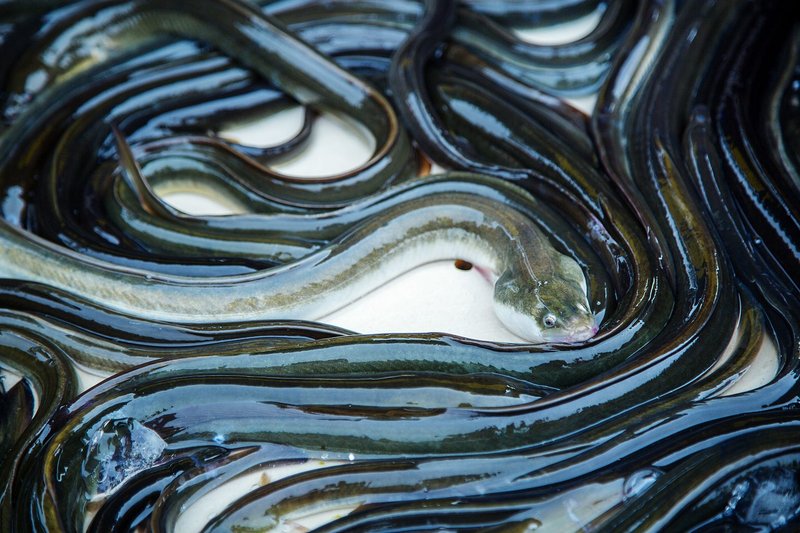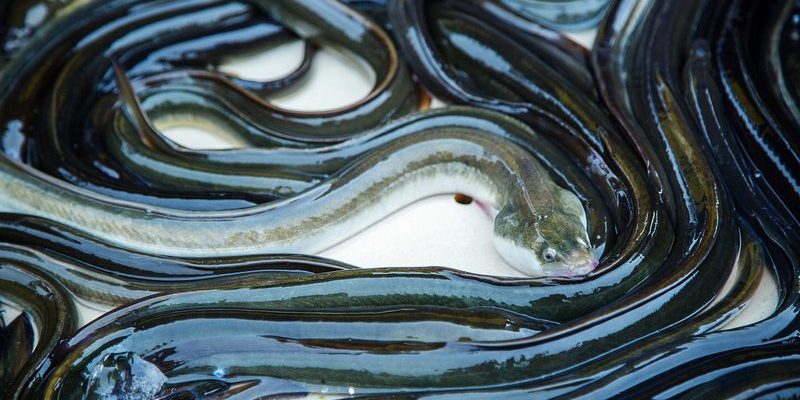
Vinegar eels are unique due to their ability to survive in high-acidity environments. They’re often found in fermented products, like apple cider vinegar, leading to their name. They’re harmless to humans but act as natural recyclers in their habitats. However, they’re not immune to the harsh realities of the world. Their populations can swing dramatically because of their predators and various environmental threats. Let’s explore what harms these little organisms and what that means for the broader ecosystem.
Understanding Vinegar Eels and Their Role
Vinegar eels, scientifically known as *Turbatrix aceti*, are fascinating little creatures. These nematodes are typically about 1-3 millimeters long and have a characteristic wriggling movement. They feed on bacteria and yeast in fermented liquids, which helps keep the fermentation process healthy. Imagine them as tiny kitchen helpers in a brewery or winery, working tirelessly to break down sugar and keep everything in balance.
These eels have a unique way of adapting to their acidic environments. They can survive in high vinegar concentrations where many other organisms would perish. This resilience is a key factor in their success. However, it also makes them susceptible to changes in their habitat caused by environmental threats.
You might be wondering what exactly happens when vinegar eels face threats. Well, their populations can decline due to various factors, including pollution, temperature changes, and, of course, predators. Understanding these threats is crucial because vinegar eels play an important role in maintaining a healthy ecosystem.
Predators of Vinegar Eels
When we think of predators, we usually picture larger animals stalking their prey. However, for vinegar eels, the threats are a bit more subtle. They face predation from a range of microorganisms and even other small aquatic creatures. Here are a few examples of the predators that pose a threat to vinegar eel populations:
- Protozoa: Tiny protozoans can easily consume vinegar eels, often targeting them as a food source. This predation is a significant factor in controlling their populations.
- Small Fish: In aquatic environments where vinegar eels are present, small fish might nibble at them during feeding, reducing their numbers.
- Other Nematodes: Ironically, other types of nematodes might also prey on vinegar eels, creating competition for limited resources.
Each of these predators plays a role in the natural balance of their environment. While it may seem daunting for vinegar eels, it’s crucial for maintaining a healthy food web. Without these checks, vinegar eels could overpopulate, leading to imbalances that might harm other species.
Environmental Factors Affecting Vinegar Eel Populations
Beyond predation, environmental factors also significantly threaten vinegar eel populations. Changes in their habitat can spell disaster for these small organisms. Here are some of the key environmental threats they face:
- Pollution: Chemicals and waste products can disrupt the acidity of their habitat, making it less hospitable for vinegar eels. For instance, runoff from agriculture can introduce harmful substances into local water sources.
- Climate Change: Rising temperatures can alter the ecosystems where vinegar eels live. They thrive in specific conditions, and any change can lead to a decline in their numbers.
- Overfishing: When larger species in the food chain are overfished, it can throw off the balance of the ecosystem, leading to increased predation on vinegar eels.
These environmental threats highlight how interconnected ecosystems can be. A shift in one part can lead to ripples throughout the entire web of life, affecting not just vinegar eels, but various other organisms as well.
The Impact of pH Levels on Vinegar Eels
Vinegar eels are unique in their relationship with acidity. They thrive in environments with a pH of around 2.5-3.5, which is quite acidic. When external factors, like pollution, alter the pH levels in their environment, it can have dire consequences. Higher pH levels (less acidity) can lead to a significant decline in their populations.
Here’s why this matters: The pH level of a habitat determines which organisms can thrive there. If vinegar eels struggle to survive due to unfavorable pH conditions, it can lead to an unhealthy ecosystem. The bacteria and yeasts that these eels help control might grow unchecked, leading to fluctuations that can harm other aquatic life.
Understanding the delicate balance of pH is critical. It’s a reminder of how even slight changes in our environment can impact tiny yet vital species. We must pay attention to preserving the ecological balance that allows vinegar eels to flourish.
Conservation Efforts and Future Outlook
Protecting vinegar eels and their habitats is not just about saving a tiny organism; it’s about ensuring the health of entire ecosystems. Various conservation efforts can help address some of the threats they face. Here are a few approaches that can make a difference:
- Pollution Control: Reducing chemicals and waste in waterways is essential. Encouraging sustainable practices, such as organic farming, can help decrease harmful runoff into aquatic environments.
- Habitat Restoration: Efforts to restore degraded habitats can give vinegar eels a fighting chance. This might involve reintroducing native plant species to stabilize ecosystems.
- Education and Awareness: Spreading awareness about the importance of vinegar eels can shift perspectives. The more people know about their role, the more likely they’ll support conservation initiatives.
These conservation strategies are critical steps in ensuring a sustainable future for vinegar eels. By understanding their role and addressing the threats they face, we can help maintain the balance in our ecosystems.
Why Protecting Vinegar Eels Matters
You might be wondering why the fate of vinegar eels matters to you. Well, here’s the thing: every species plays a part in its ecosystem. If vinegar eels decline, it could lead to unchecked bacteria and yeast populations, disrupting fermentation processes crucial for many foods and drinks we enjoy.
Moreover, the decline of vinegar eels could hint at broader ecological issues. Monitoring their populations can provide insights into the health of our aquatic systems. Protecting them also means protecting the intricate web of life that supports countless other species.
So, what can you do? Stay informed about local environmental issues, support sustainable practices, and advocate for conservation efforts. Every small action contributes to preserving the natural world we all share.
In conclusion, vinegar eels might be tiny, but their impact is mighty. They navigate a world filled with dangers from both predators and environmental threats. By understanding their role and the challenges they face, we can help ensure these fascinating creatures continue to thrive in their unique habitats. Remember, nature is a delicate balance—let’s work together to keep it that way.

